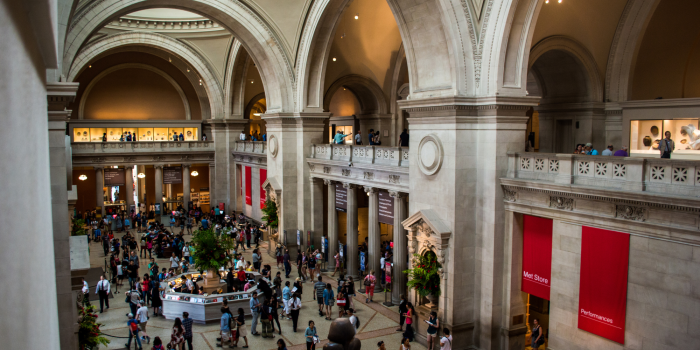The call for change in arts institutions is not a new phenomenon, but in recent years the call has morphed into a necessity for systematic and organizational reformation across the sector to support and realize Inclusion, Diversity, Equity, and Accessibility (IDEA) initiatives and programs.
While it is not a new conversation, especially now, there are new initiatives and perspectives that can continue to inspire further growth in the sector.
In this video and article, we have compiled research on what’s new and inspiring in the arts sector. We put a spotlight on the continued issues and what institutions, large and small, are working towards and accomplishing as IDEA becomes integral to meaningful art.
The Pipeline
In arts organizations, and nonprofits generally, a major hurdle in the drive to create and sustain diverse internal cultures is creating inclusive pipelines.
 Expensive master’s degrees and unpaid internships have traditionally been required to enter into the profession, creating a blocked pipeline for many students of color who, due to historical inequalities, may be less likely to have families who can financially support them.
Expensive master’s degrees and unpaid internships have traditionally been required to enter into the profession, creating a blocked pipeline for many students of color who, due to historical inequalities, may be less likely to have families who can financially support them.
In 2020, Adrienne Arsht gifted the Metropolitan Museum $5 million to fund paid internships. In the years since this donation, The Met’s internship applications have tripled. Many grant makers and funders have followed suit: the Andrew Mellon Foundation granted $450,000 to the National Gallery of Art to fund paid internships for students from Howard University.
Interpretation and IDEA
More than creating an internal culture driven by IDEA, arts organizations are grappling with their interpretation of art and history in the light of IDEA.
 Foundations and philanthropists are prioritizing funding projects that put inclusion and diversity at the forefront. The Andrew W. Mellon Foundation recently granted arts institutions in the city of Richmond, Virginia $16 million to go towards exploration, preservation, and reimagining of the city’s rich historical narratives.
Foundations and philanthropists are prioritizing funding projects that put inclusion and diversity at the forefront. The Andrew W. Mellon Foundation recently granted arts institutions in the city of Richmond, Virginia $16 million to go towards exploration, preservation, and reimagining of the city’s rich historical narratives.
Studies have shown that arts and culture institutions are amongst the most trusted by the public. This levies a heavy burden on these organizations to not only uphold this trust, but to serve as leaders in the community. This includes leading the charge to ensure IDEA is not just a component of an institution but a driving force.



